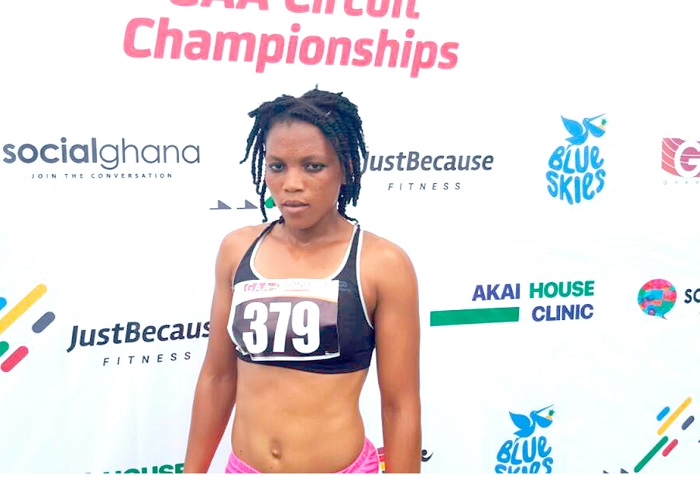
Promising signs for the future of Ghana athletics
Two of Ghana’s leading athletes, Flings Owusu-Agyepong and Sean Safo-Antwi, are currently participating in the 2018 IAAF World Indoor Championships in Birmingham, England, even though they may not be in the spotlight as favourites in the 60-metre sprints.
Over 7,728 kilometres away from Arena Birmingham where the world’s elite athletes are competing, some of Ghana’s youth have been pushing themselves to the limits of their physical capacities as they chase glory in the last few days during the Ghana Athletics Association (GAA) Circuit Championships and the Central Regional Super Zonal Athletics competitions at the Cape Coast Stadium.
Advertisement
Results recorded during the GAA Circuit, which ended last Saturday, were very inspiring with young athletes such as Hor Halutie, Rafiatu Nuhu and others who recorded some very impressive times, including personal best (PB), with Halutie not only winning the sprints double but also inching closer to the Commonwealth Games qualification mark.
Perhaps, the addition of schools invitational competition (4x100m relays) to the Circuit Championship was a masterstroke by the GAA as it reignited old rivalry among second cycle institutions in Cape Coast as the participants recorded some very fast times.
In fact, the intensity of support in the stands by rival cheer groups created the right ambience for the youngsters to give their best, an atmosphere that was extended to the Super Zonal competition.
In the last few years, Ghana has failed to shine at the world stage as a generation of world-class athletes, including Aziz Zakari, Leo Myles-Mills, Andrew Owusu,Margaret Simpson, Ignisious Gaisah (who later switched nationality to run for the Netherlands) faded out. And in recent times, the GAA has turned its focus to unearthing talents at the grass roots to develop into world future beaters.
The Professor Francis Dodoo-led GAA has come under criticism for the declining fortunes of athletics and other shortcomings, including the manner in which it has handled the impasse with promising athlete Martha Bissah. Nonetheless, the association deserves some encouragement to continue with its talent-hunting exercises under its Youth Development Programme out of which not less than 37 promising youngsters from second-cycle institutions have earned scholarships to pursue higher education in UA colleges and universities where they benefit from better training methods, facilities and regular competitions.
That focus on school sports, including other private initiatives, such as the GNPC-sponsored Ghana’s Fastest Human competition, spearheaded by former Olympian, Reks Brobby, and endorsed by President Akufo-Addo when he launched last year’s competition, deserve all the support from the state and private entities because they involve a lot of hard work, raising the needed funding to organise but very critical to Ghana’s success in track and field events in future. Through these initiatives, many promising athletes since 2012, including national stars John Ampomah, Janet Amponsah, Elizabeth Dadzie, Emmanuel Dasor, Solomon Afful and Daniel Gyasi, have been unearthed and are being groomed for greatness both in Ghana and abroad.
The reconstruction of the Accra Sports Stadium for the 2008 African Cup of Nations robbed the facility of its athletics tracks and as a result greatly affected the development of the sport, as the fast-deteriorating tracks at the El Wak Stadium and the uncompleted University of Ghana athletics oval became the only places where competitions could take place in the capital. The net effect of the Accra Sports Stadium redesign was that the sport was slowly moved to the back-burner in the nation’s capital and thus affected the existing rivalries among schools in the Greater Accra Region which resulted in unearthing and development of talents in times past.
However, it is very gratifying that schools and colleges athletics remain big in the Ashanti Region where talented athletes, such as Haluties and others have emerged in recent years and remain a good conveyor belt for unearthing promising athletes as has been the case for many decades.
It is important that schools athletics is promoted by the Ghana Education Service (GES), in partnership with the athletics federation in other parts of the country, such as Tamale and Sekondi, where there exist stadiums with athletics tracks (or even with decent fields suitable for athletics) to serve as conveyor belts for unearthing talents to represent Ghana in future.



